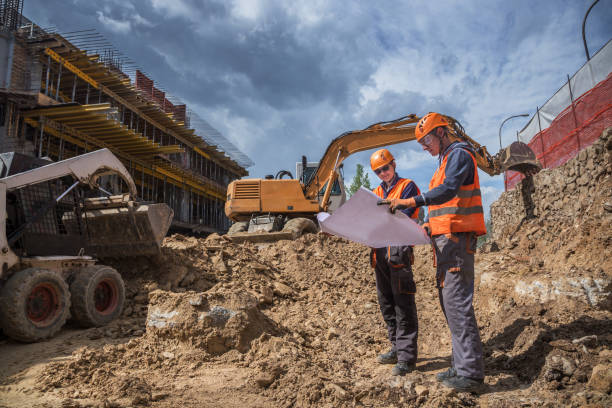Record breaking transport tunnels are being constructed or are in the planning stage. NCE looks at the contributing factors to the industry’s ability to push boundaries. In late November, National Highways’ Lower Thames Crossing reached a key milestone when the project’s revised Development Consent Order (DCO) application was submitted to the Planning Inspectorate. The proposed crossing will feature 23km of new road and the UK’s longest road tunnel, overtaking the 3.2km long Queensway Tunnel under the River Mersey in Liverpool. The twin bore tunnel will be 4.2km long, passing under the River Thames. Its southern portal will be near Gravesend in Kent and its northern potal near East Tilbury in Essex. The Lower Thames Crossing’s tunnel diameter will exceed 16m – making it the largest in Europe and third largest in the world. this will enable traffic to flow along two, three lane carriageways. If the DCO is granted soon, National Highways says construction could start as early as 2024. But the Lower Thames Crossing is not the only project that could break national tunnel records. Transport for the South East’s draft Strategic Investment Plan for the South East includes a proposal for a £2bn tunnel, up to 5km long to ease congestion on the A27 at Worthing.

Whether this Project Gets the Go Ahead is Uncertain.
but three global records will be broken in the coming decade by projects which have progressed beyond the planning stage. Experience, technological advances, improved risk management and reduced tunnelling costs are helping the industry push the boundaries of tunnel construction. Work to build the world’s longest railway tunnel, the 64km Brenner Base Tunnel, connecting Italy and Austria is already underway. The 18km Fehmarnbelt Fixed Link between Denmark and Germany is also under construction (NCE, July). When complete, the road and rail link will be the longest immersed tube tunnel in the world. It will be 8km longer than the 10km tunnelled section of the Hong Kong-Zhuhai-Macau Bridge, the current record holder. The €7.1bn (£6.1bn) project is overseen by Femern, a specially-created subsidiary of the Danish state-owned transport management firm Sund & Bælt. Excavation of the trench which will house the Fehmarnbelt immersed tube began in the summer of 2021 and about 70% of that work is complete. Meanwhile the construction of one of the three halls for the world’s largest tunnel segment factory – which will produce the tunnel’s 89 precast concrete elements – is nearing completion. Femern says that construction of the tunnel portals is also progressing and the whole project is expected to be completed in 2029. Another record breaking project has progressed beyond the planning stage in Scandinavia. The 26.7km long Rogfast twin bore road subsea tunnel on the E39 in Norway will have a diameter of 10.5m and will reach a maximum depth of 392m below sea level.

It will connect Randaberg and Vestre Bokn in the south of the country.
replacing ferry services. Once complete, Rogfast will snatch the title of the world’s longest and deepest subsea road tunnel from the Ryfast Tunnel – also in Norway. That tunnel is 14km long and is a maximum of 292m below sea level. It opened in late 2019. Statens Vegvesen – the Norwegian public roads administration – has divided the NKr22bn (£1.84bn) Rogfast project into six different sections – three are for the construction of the main tunnel and the other three are for access routes and ventilation tunnels. For the latter, work on two sections is complete, while construction of the 3.5km tunnel connecting the island community of Kvitsøy to the main tunnel is underway. The two construction contracts for the main tunnel will be awarded by the end of the year, while the third will be awarded in 2024. The project is expected to be completed in 2031.
Optimal solution
Breaking records was not the objective of any of the project clients who opted for these solutions – the decisions came after assessing a range of infrastructure options. “I believe our industry will only ‘build big’ where there is the proven need and demand and where the benefits and positive outcomes from doing so can be clearly seen,” says Lower Thames Crossing project director tunnels Sinisa Galac. “We didn’t set out looking to break records. Instead we carefully designed the scheme to minimise the impact on the local community and to be the greenest road ever built in the UK. “We decided on a tunnel rather than a bridge to protect the local natural environment and extended the tunnel length by 950m to protect the Thames marshlands.” This was also the case for the Fehmarnbelt Fixed Link project. Femern opted for an immersed tube tunnel – which made it a record breaking project – because the client found it to be more feasible and more environmentally friendly than a bored tunnel or a bridge. Mott MacDonald project director Rosa Diez says that over the past two decades tunnels were excavated for many urban transport projects because they were the only feasible solution, leading to growth in the tunnelling market. “We started building more tunnels and demonstrated that they can be done, pushing the boundaries little by little,” she says. Founder and managing director of technology and consulting company Inbye Engineering Benoit Jones says that some projects may opt for tunnels instead of above ground infrastructure because the comparative cost is lower.building bridges or cuttings and earthworks, tunnelling is perhaps cheaper than building a railway at the surface,” he explains.

Technology
Tunnel boring machines (TBMs) are used in many record breaking projects. TBM manufacturer
Robbins vice president of engineering Brad Grothen says that the evolution of these machines has made major tunnelling projects economically viable. Grothen explains that the machines are designed and optimised for specific projects, with features added which allow the TBMs to advance quickly and safely through different types of geology. He highlights the fact that the increased tunnelling speeds lead to shorter project schedules, resulting in lower costs. “TBMs start to make economical sense after 4km to 5km. They lend themselves to longer tunnels. They have portable conveyors so can efficiently handle the muck, which is a big expense [if alternative methods are used], and they can efficiently excavate the material. They have a big upfront capital cost and set up time, so as you get longer tunnels, the tunnel construction becomes more economical,” Gothen says. He adds that advances in TBM technology for example, so that they can move more effectively through fault zones, have also made clients understand that they are “able to go through with more complex projects and have a manageable amount of risk”. Diez says that the development of new design tools has also made big tunnelling projects more viable by reducing cost and making them more sustainable. She finds that designers have been focusing on reducing the amount of materials used and on designing lean structures.
Technology has also helped with the construction of larger tunnel dimensions.
“Technological advances have made building bigger possible. For example, recent innovations in fire safety, concrete strength and tunnel ventilation have enabled us to extend tunnel lengths and widths from what was previously achievable,” says Galac.

Experience is key
The knowledge clients, contractors and engineers have acquired from past projects has also been instrumental in their ability to push the boundaries of tunnel construction. Jones emphasises the greater understanding of challenging ground conditions the sector has gained and the positive effect this has had on the design and construction of new tunnels. He points to the experience of the Norwegian tunnelling sector: “Rogfast Tunnel is definitely a challenging project, but in Norway they’ve had a lot of experience with long subsea road tunnels. They’re comfortable with building this type of tunnel and they have the confidence to do it.” Clients and contractors often stick to a preferred tunnelling method because of the efficiencies they have achieved over the years. Statens Vegvesen project manager for Rogfast Oddvar Kaarmo says that the “traditional” Norwegian method of tunnelling was selected for the project. This involves using drill and blast cycles to excavate through five different types of rock along the route. Sund & Bælt’s experience in immersed tube tunnel construction has also been valuable for the Fehmarnbelt Fixed Link. Sund & Bælt was responsible for the construction of the resund Fixed Link between Malmö in Sweden and Copenhagen in Denmark. It opened in 2000 and has a 4km immersed tube tunnel. Femern head of German press and media relations Denise Juchem says that knowledge gained from the Øresund project has been used on the new tunnel project. he adds: “Femern employs many highly qualified engineers who have worked on other tunnel construction projects around the world. This expertise is a great advantage for us.” The more projects clients are involved in, the greater understanding they have of the processes and risks, boosting their confidence to undertake bigger projects. The clients have not become risk averse, Diez clarifies, but that risk is more controlled because of the more extensive processes and approvals needed for a project to go ahead compared to the past. “A company reviews all the technical elements as part of the due diligence. You have a panel of experts to capture if you have any fatal flaws in it and your design is double checked by somebody else “All that checking, gives the clients more confidence that the technical measures are sound and that the projects can go ahead and they can get insurance. And even if it’s risky, the risks can be controlled,” says Diez.As technology evolves and the industry


Recent Comments